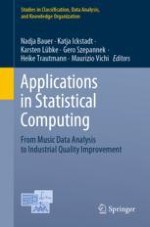2019 | OriginalPaper | Buchkapitel
7. Comprehensive Feature-Based Landscape Analysis of Continuous and Constrained Optimization Problems Using the R-Package Flacco
verfasst von : Pascal Kerschke, Heike Trautmann
Erschienen in: Applications in Statistical Computing
Aktivieren Sie unsere intelligente Suche, um passende Fachinhalte oder Patente zu finden.
Wählen Sie Textabschnitte aus um mit Künstlicher Intelligenz passenden Patente zu finden. powered by
Markieren Sie Textabschnitte, um KI-gestützt weitere passende Inhalte zu finden. powered by
Abstract
flacco, an R-package for feature-based landscape analysis of continuous and constrained optimization problems. Although its functions neither solve the optimization problem itself nor the related algorithm selection problem (ASP), it offers easy access to an essential ingredient of the ASP by providing a wide collection of ELA features on a single platform—even within a single package. In addition, flacco provides multiple visualization techniques, which enhance the understanding of some of these numerical features, and thereby make certain landscape properties more comprehensible. On top of that, we will introduce the package’s built-in, as well as web-hosted and hence platform-independent, graphical user interface (GUI). It facilitates the usage of the package—especially for people who are not familiar with R—and thus makes flacco a very convenient toolbox when working towards algorithm selection of continuous single-objective optimization problems.